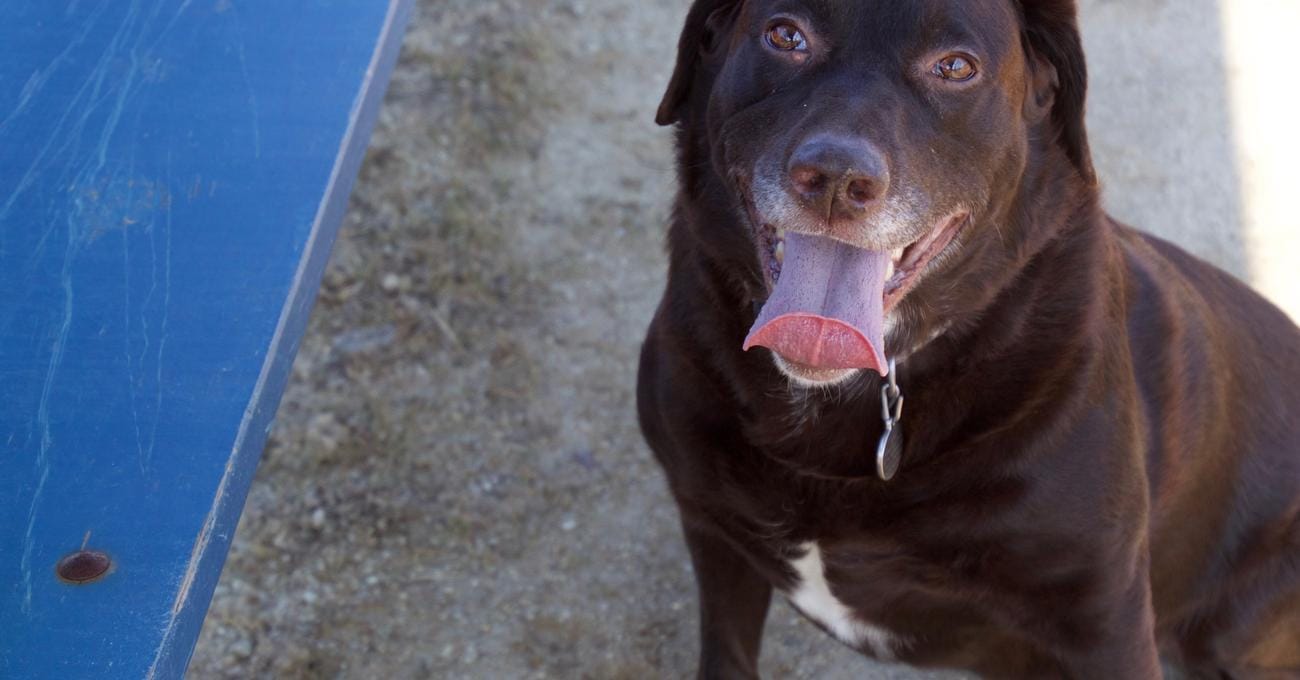As a proud owner of a chocolate Labrador Retriever, you might have observed distinctive white markings on your furry companion. Curious about whether it's common for Chocolate Labs to exhibit these markings? You're in the right place! This article delves into the intriguing subject of white markings on chocolate Labs. Can Chocolate Labs have white markings?
We'll unravel the mysteries, discussing the prevalence and factors influencing these unique features. Gain insights into the charming traits of your chocolate Lab and discover if those white markings are a common and delightful occurrence in this beloved breed. Your journey into understanding the nuances of your chocolate Lab's appearance starts here.

Understanding Coat Colors and Patterns in Labrador Retrievers
Labrador Retrievers are one of the most popular dog breeds in the world, known for their friendly and lovable nature. When it comes to coat colors, Labels come in three main varieties: black, yellow, and chocolate. While black Labs are the most common, chocolate Labs have gained popularity over the years due to their unique and eye-catching coat color.
The chocolate coat color in Labs is the result of a specific gene mutation. It produces a range of shades from a deep, dark chocolate brown to a lighter shade resembling milk chocolate. However, it is important to note that chocolate Labs can sometimes develop white markings, which may seem surprising to some owners.

Can Chocolate Labs Have White Markings?
While it's more common for black or yellow Labs to exhibit white markings, chocolate Labs can also possess these unique traits. White markings may manifest on various parts of their body, such as the chest, paws, tail tip, and face, ranging from small spots to larger patches, enhancing their already charming appearance.
The occurrence of white markings in chocolate Labs is linked to a blend of genetic factors. These factors influence the expression of coat patterns and colors, contributing to the appearance of these distinct markings. Although the specific genes responsible are still under study, it's evident that these markings contribute to the diversity and individuality of Chocolate Labs.
While black and yellow Labs more frequently display white markings, the occasional presence of these traits in chocolate Labs adds an extra layer of uniqueness to the breed. Appreciating the charm they bring to your chocolate Lab's appearance underscores the beauty of their genetic diversity and individual expression.
Common Types of White Markings in Chocolate Labs
White markings on chocolate Labs can vary in size, placement, and intensity. Some Labs may have small spots or freckles on their chest or paws, while others may have larger patches on their face or tail tip. These markings can be symmetrical or asymmetrical, adding to the uniqueness of each dog.
One common type of white marking seen in chocolate Labs is the "tuxedo" pattern. This pattern resembles a formal tuxedo, with a white chest and sometimes white paws. Another common marking is a white blaze on the forehead, which can give the dog a distinctive and expressive look. Regardless of the specific type of markings, they are sure to catch the attention of anyone who sees them.

Genetic Factors that Influence White Markings in Chocolate Labs
The appearance of white markings in chocolate Labs can be attributed to various genetic factors. These factors interact to determine the distribution and intensity of the markings. One gene, known as the "S" gene, plays a significant role in determining the presence of white markings in many dog breeds, including Labs.
The "S" gene comes in two forms: S (solid) and s (spotting). The S gene produces a solid color coat, while the s gene produces white spotting. When a chocolate Lab inherits the s gene from one or both parents, it can lead to the development of white markings. The intensity and distribution of these markings can vary depending on other genes and factors involved.
Health Considerations for Chocolate Labs with White Markings
White markings on chocolate Labs are generally considered a cosmetic feature and do not have any direct health implications. However, it is essential to remember that Labradors, regardless of their coat color or markings, are prone to certain health conditions. Regular veterinary check-ups, a balanced diet, and proper exercise are crucial for maintaining the overall health and well-being of your chocolate Lab.
Additionally, it's important to protect your Lab's skin, including any areas with white markings, from excessive sun exposure. Just like humans, dogs can develop sunburn and skin damage from prolonged exposure to the sun. Applying pet-safe sunscreen or providing shade during peak sun hours can help prevent these issues.

Grooming and Care for Chocolate Labs with White Markings
Proper grooming and care are essential for maintaining the health and appearance of chocolate Labs, including those with white markings. Regular brushing helps keep their coats clean and free from tangles or mats. This is especially important for Labs with longer fur, as it can help prevent debris from getting trapped in their coat.
Bathing your chocolate Lab should be done as needed, using a mild dog shampoo that won't irritate their skin. Pay extra attention to the areas with white markings, ensuring they are thoroughly cleaned. It's also a good idea to check their ears regularly and trim their nails to keep them comfortable and prevent any potential issues.

Training and Socialization for Chocolate Labs with White Markings
Training and socialization are vital for all Labrador Retrievers, regardless of their coat color or markings. Proper training helps ensure that your chocolate Lab is well-behaved and responsive to commands. Socialization, on the other hand, helps them become comfortable and confident in various situations and around different people and animals.
Engaging in activities such as obedience training, agility training, or even joining a dog sports club can provide mental stimulation and bonding opportunities for you and your chocolate Lab. Remember to use positive reinforcement techniques, such as treats and praise, to reward good behavior and encourage learning.
Conclusion:
"Exploring the Distinctiveness: Can Chocolate Labs have white markings? Embrace the allure of these markings, showcasing the diverse interplay of genetic factors. While not uncommon, these unique traits contribute an extra layer of charm to the already captivating appearance of Chocolate Labs. The size, placement, and intensity of these white markings may vary, but they are a testament to the individuality of the breed.
In conclusion, the presence of white markings on chocolate Labs, though not without precedent, adds to the breed's allure. Although these traits typically don't pose direct health concerns, providing consistent grooming, care, training, and socialization remains paramount for all chocolate Labs, regardless of their distinctive markings. Celebrate and cherish the uniqueness of your chocolate Lab, enjoying the unwavering love and companionship they bring into your life."
Frequently Asked Questions (FAQs)
- Are white markings common in chocolate Labs?
- While it is more common for black or yellow Labs to have white markings, it is not uncommon for chocolate Labs to also possess these traits.
- Do white markings on chocolate Labs have any health implications?
- White markings on chocolate Labs are generally considered a cosmetic feature and do not have any direct health implications.
- Can white markings change over time?
- The intensity and distribution of white markings can change as a chocolate Lab grows and matures. Some markings may become more pronounced, while others may fade or disappear.
- Are white markings in chocolate Labs a result of mixed breeding?
- No, white markings in chocolate Labs are not necessarily a result of mixed breeding. They can occur in purebred Labs due to genetic factors.




